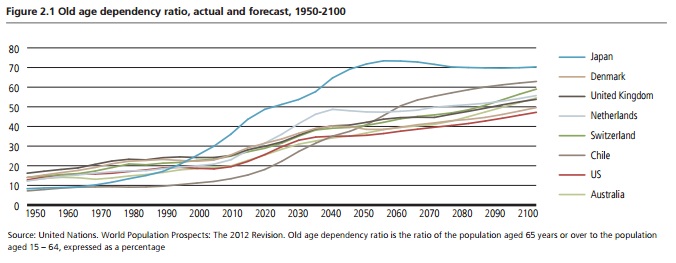From the blog: Scheme maturity as well as changes to regulations and accounting rules have been the driving factors behind portfolio diversification over the past 50 years, boosting pension scheme appetite for alternatives and overseas investments.
Asset manager UBS's annual Pension Fund Indicator report points to greater fragmentation and larger allocations to overseas assets as key trends for pension fund investors.
Asset manager UBS's annual Pension Fund Indicator report points to greater fragmentation and larger allocations to overseas assets as key trends for pension fund investors.
52 years of UK scheme investing…

"The average figures do not show the increasing tendency for schemes to adopt allocations specific to their needs rather than being close to the average," the report stated.
"This trend has been reinforced by growing scheme maturity, regulatory and accounting changes, and advances in asset-liability modelling techniques."
While the graph appears to show schemes settling into a steady, if more diverse, allocation in recent years, Ian Barnes, head of UK and Ireland at UBS Global Asset Management, said schemes were still constantly seeking innovative investments.
"Maybe 6-8 years ago alternatives might only have been real estate and hedge funds," Barnes said, adding that the asset class is now much wider.
"There is far more understanding in the market of the importance of diversification," he said.
This expansion of the asset class is corroborated by consultancy Towers Watson's latest Global Alternatives Survey, but there has been some trepidation from global pension fund investors around areas such as commodities and private equity over the past year.
Global pension fund investment into alts…

Source: Towers Watson
It showed pension fund assets managed by the direct hedge fund managers have grown 30 per cent since 2011, rising 5 per cent over the past year.
Meanwhile pension assets managed by direct private equity fund managers fell by 5 per cent last year, following a period of steady growth between 2011 and 2013.
Role of hedge funds
Using data from the National Association of Pension Funds' Annual Survey 2014, the UBS report highlighted increased interest in certain alternatives – especially hedge funds and infrastructure – through private finance initiatives or public-private partnerships.
The report said: "Their data shows that, compared to 2007, more schemes are investing in the various alternatives. The number of schemes investing in infrastructure PFI/PPP has more than doubled during this time."
Hedge funds faced criticism in recent months as high-profile schemes exited the asset class, but on the whole the wider pensions industry still sees the appeal.
However, Barnes said the way schemes were investing in hedge funds had changed in recent years, with focus shifting away from fund-of-funds set-ups – where questions have been raised over fees – towards single-fund multi-strategy approaches.
"Hedge funds are filling the loss from big schemes with interest in [their] liquid alternatives businesses," he said.
Longevity risk
Ageing populations were singled out as a key risk in the report, which showed the increasing dependency ratio – the proportion of the population aged over 65 compared with those aged 15-64 – climbing steadily in a range of countries.
 The report said: "The key implication of increasing dependency ratios is that state pension systems that operate on a pay-as-you-go basis become less viable.
The report said: "The key implication of increasing dependency ratios is that state pension systems that operate on a pay-as-you-go basis become less viable.
"In simple terms, if the working population declines relative to the number of pensioners, there will be less revenue from taxes, yet an increasing bill for pensions."














